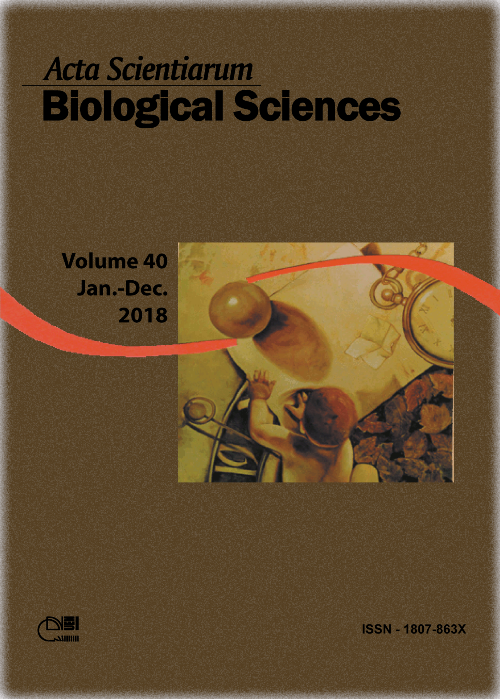<b>Extraction, physical-chemical characterization and <i>in vitro</i> inhibitory potential of thrombin generation of crude sulfated polysaccharides from Brazilian tropical seaweeds
Abstract
The biotechnological value of macroalgae for screening assays of thrombin generation-TG using sulfated polysaccharides-SPs as substitutes to heparin has been poorly explored. Five Brazilian species of macroalgae (Gracilaria birdiae, Acanthophora muscoides, Halymenia sp., Caulerpa cupressoides and C. racemosa) were analyzed and compared for their abundance, physical-chemical characteristics and in vitro anticoagulant assays of activated partial thromboplastin time-APTT, prothrombin time-PT and TG. Papain extraction yielded (p < 0.001) from 0.66±0.03% (C. racemosa) to 41.60±1.10% (Halymenia sp.) of crude SPs varying sulfate (8.41-42.60%) and total sugars (47.80-70.53%). Crude SPs showed difference in mobility and resolution pattern by agarose electrophoresis, while polyacrylamide analysis revealed SPs of > 100 kDa. These procedures, combined with the use of Stains-All, also indicated nonSPs. APTTs ranged from 2.81 (A. muscoides) to 21.30 IU (Halymenia sp.) vs. heparin (193 IU), and were dependent on sulfation of the crude SPs. PT was not altered. With respect to TG assay, crude SPs modified concentration-dependent and independently from molecular mass TG by both intrinsic/extrinsic pathways in 60-fold diluted human plasma, with total intrinsic inactivation using crude SPs from A. muscoides in parallel to heparin (p < 0.05). Thrombosis in vitro is differentially modulated by distinct crude SPs from Brazilian seaweeds.
Downloads
DECLARATION OF ORIGINALITY AND COPYRIGHTS
I Declare that current article is original and has not been submitted for publication, in part or in whole, to any other national or international journal.
The copyrights belong exclusively to the authors. Published content is licensed under Creative Commons Attribution 4.0 (CC BY 4.0) guidelines, which allows sharing (copy and distribution of the material in any medium or format) and adaptation (remix, transform, and build upon the material) for any purpose, even commercially, under the terms of attribution.
Read this link for further information on how to use CC BY 4.0 properly.












1.png)




3.png)













